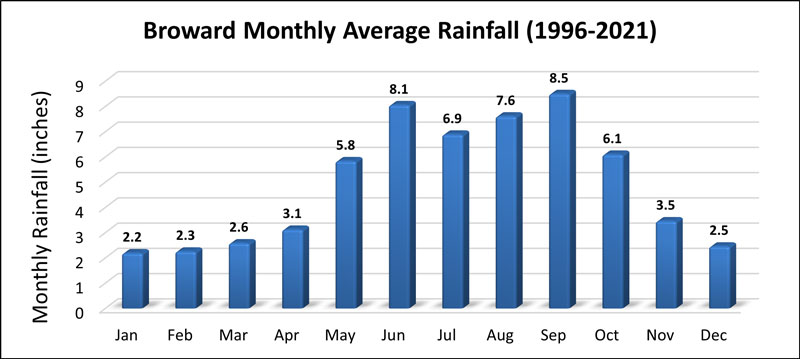
Residents in Broward County, FL experience flooding from either heavy rainfall or
high tides. During these events the
drainage systems may reach capacity due to the amount of rainfall received or because our stormwater management is limited by downstream conditions, including sea levels. “Sunny Day Flooding” can also occur due to the highest tides of the year, which are also commonly referred to as King Tide events. Low-lying coastal areas of Broward County can be impacted by such flooding. These events often occur during the fall (August-November) with the peak tides usually occurring in October. Twice a day these tides will be so high that they can cause ocean water to back flow through drainage pipes, flow over sea walls, or even up through the ground due to the higher water pressure. These flooding conditions can last for several hours and can be very damaging to property, such as cars, due to corrosion from the saltwater.
King tides can be particularly dangerous and lead to significantly higher flooding if a high rainfall event occurs during the same time. An even higher threat of flooding can also occur during this time during a tropical storm or hurricane due to the associated wind and storm surge risks.
Rainfall Flooding
In recent years, increasing flood risks are being accounted for, as a result of sea level rise and other potential climate impacts. Projected higher sea levels –
approximately 2ft increase by the year of 2060 – more intense rainfall events and elevated groundwater levels will result in reduced drainage capacity and more frequent flooding. Broward County is prioritizing a series of
efforts to increase flood resilience.
The rainy season in south Florida usually lasts from May-October where we receive 2/3 (43 inches) of our yearly average rainfall (59 inches.)

During this time and especially towards the end of the wet season, flooding risks are higher as accumulated rainfall raises the natural groundwater levels, resulting in less storage capacity for drainage. Major rainfall events can also occur sporadically during the year such as the rainstorms in December 2009 that caused significant flooding in southeast Broward or the high January rains in 2016 that flooded much of South Florida.
Major rainfall events can also occur sporadically during the year such as the rainstorms in December 2009 that caused significant flooding in southeast Broward or the high January rains in 2016 that flooded much of South Florida.
